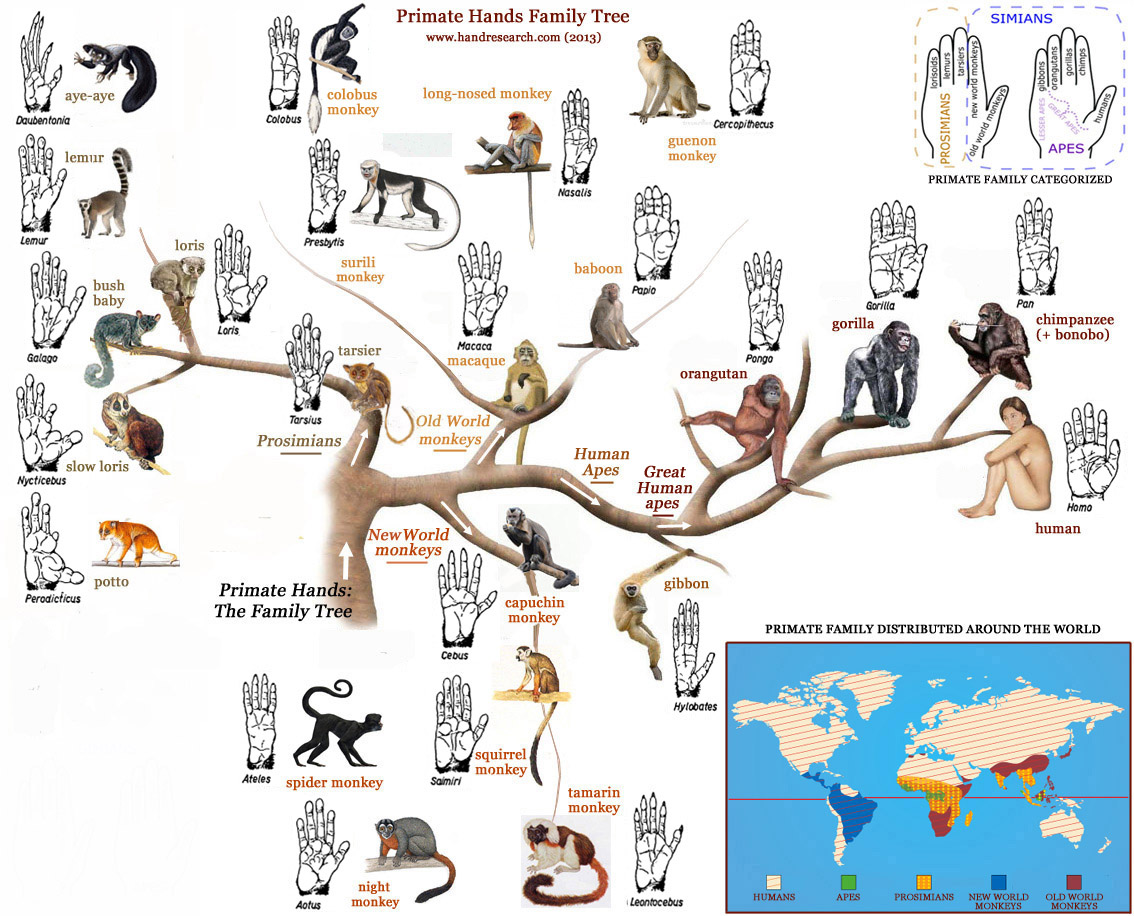|
By looking at the differences and similarities between apes and us we may find the secret ingredient that makes apes apes, and humans humans.
We take it for granted, but self-recognition is a fundamental building block of human society.
We exist as individuals, each with our own unique features.
Scientists believe self-recognition is essential for our survival. We can live in large groups because we recognize similar features to our own in others! |

|
IS SELF-RECOGNITION UNIQUELY HUMAN?
Show a monkey a mirror, and it thinks it's another monkey: it attacks. But how do our close relative the great apes react when faced with their image? In 1970 psychologist Gordon Gallup Jr. developed an experiment test to determine whether an animal possesses the ability to recognize itself in a mirror. The 'Mirror Test' is now known as the primary indicator of self-awareness in non-human animals; it is said to mark entrance to the mirror stage by human children (at the age of about 18 months) in developmental psychology. Bonobos, chimpanzees, orangutans have passed the mirror test. Initially, it was thought that gorillas were unable to pass the test, but there are now several well-documented reports of gorillas passing the test (such as Koko - the gorilla that made the piece of art on the left). The National Geographic video above describes the full story! NOTICE: Non-primate species that have managed to pass the 'Mirror Test' are: dolphins, orcas, elephants & European magpies. |
|
HUMAN EVOLUTION & THE TWENTY-FOUR KARAT THUMB!
Opposable thumbs are a signature feature of the primate family, and played a large role in the ancient humans' invention and use of tools And the long, opposable human thumb became in science known as a symbol for human evolution. of which the hand is capable." [John Napier in 'Hands', 1993] An animal species is said to have opposable thumbs if the thumb is capable of bending in such a way that it can touch all the other digits on the hand. Opposable thumbs are shared by many primates, including most simians, and some prosimians (see picture below). The human thumb shows a combination of four characteristics: |

'just give those opposable thumbs a chance'. |
|
1) The human thumb rotates perfectly 'opposable' to all 4 fingers (digits), and only the human hand is capable to make digit axis rotation resulting full pad contact between the thumb and index finger.
No other primates have this perfect characteristic (great apes & old world monkeys have imperfect opposable thumbs, and tufted capuchins are known to have a limited precision grip).
2) The human thumb has a low setting, and the human thenar & hypothenar start at a likewise proximal location to the wrist. This characteristic is only seen in human apes (in old- and new world monkeys the thenar is set more distally to the wrist; the ulnar side of their hands is more developed).  3) The human thumb is long: usually it is longer than the pinky and it typically extends beyond the distal end of the palm.
No other primates have this combined characteristic (some prosimians & new world monkeys have a thumb extending beyond the distal end of the palm, but in those species that is more due to a higher setting).
3) The human thumb is long: usually it is longer than the pinky and it typically extends beyond the distal end of the palm.
No other primates have this combined characteristic (some prosimians & new world monkeys have a thumb extending beyond the distal end of the palm, but in those species that is more due to a higher setting).
4) The human thumb has greater breadth in the distal phalanx than in the proximal phalanx, which makes a better pad-to-pad contact possible with the other fingers. These four characteristics represent key-elements of the human 'twenty-four karat opposable thumb' (a term coined by neurologist Frank R. Wilson in his book 'The Hand' - 1998). The combination results in the capability to make the so-called 'power grip' and 'precision grip' - which were described in detail by physician John Napier in 'Hands' (1980). Now, does the human opposable thumb correlate with self-awareness? (Read further about how the opposable relates to self-awareness below) |

(The drawn hands inside the picture above origin from A. H. Schultz, The Life of Primates, Universe Books, 1969)
|
DOES THE OPPOSABLE THUMB CORRELATE WITH SELF-AWARENESS?
Scientists recognized that self-recognition is essential for our survival, and the opposable thumb is known to play a key-role in human survival at the evolutionary battleground with animals featured with a body much stronger than the human body! It appears not a matter of whether there is a link, the unanswered question is: how strong is the link?
Interestingly, even though the absolute length of the gibbon's (imperfectly) opposable thumb is relatively high, due to it's low setting it does not reach beyond the distal termination of the palm as seen in the human hand. But gibbons are not capable to pass the 'Mirror Test' (only 3 out of 12 gibbon species have shown some form of self-awareness, but no gibbon has ever passed the 'Mirror Test'). Only humans have the combination of the 5 thumb aspects featured in the table; and it is rather fascinating to see that the bonobo's thumb approaches the typical characteristics of the human thumb regarding in all 5 thumb dimensions! (Read further about thumb markers for human awareness)
PRIMATE HANDS IN THE NEWS
|
|
|